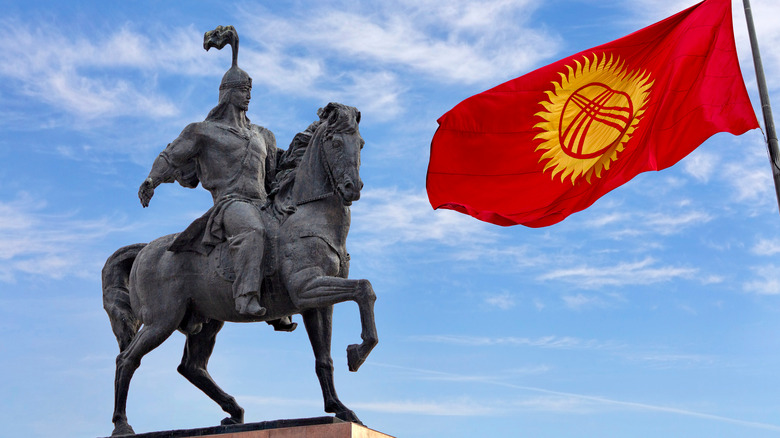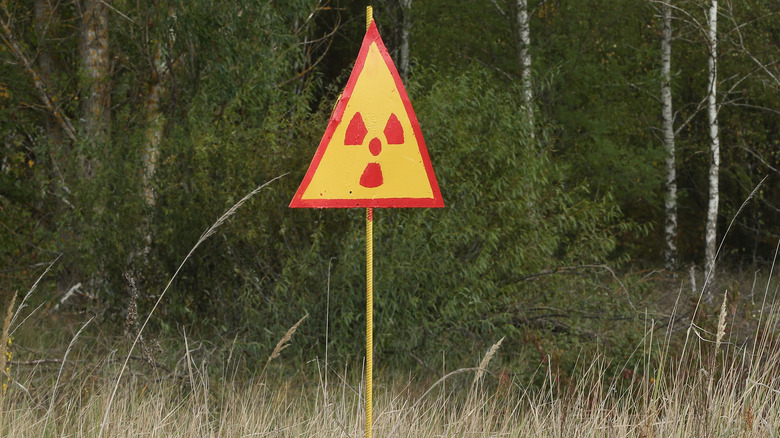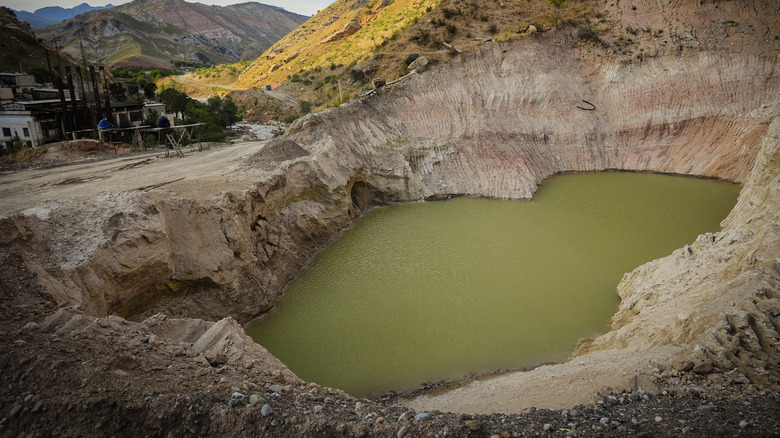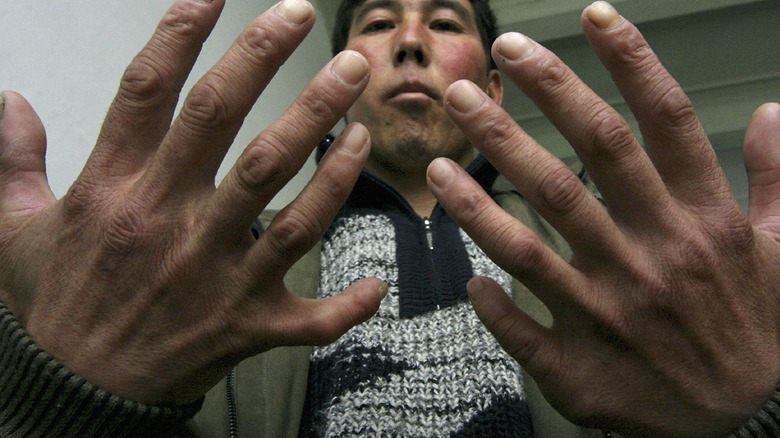This Town In Kyrgyzstan Is One Of The Most Dangerous Places On Earth
The republic of Kyrgyzstan is located in Central Asia. Once a republic of the former Soviet Union known as Kirgiziya, Kyrgyzstan became an independent country in August 1991, per Britannica. Today, the country of over 6 million people borders China, and other former Soviet countries of Kazakhstan, Tajikistan, and Uzbekistan.
Like anywhere, there is always the threat of various types of crime, and Kyrgyzstan is no different for the most part. It is considered a relatively safe country, aside from the occasional political unrest that might warrant travel warnings from the State Department. The country ranks No. 30 in a crime rate index, shows World Population Review. A lot of that crime often happens in Bishkek, the country's capital and largest city, but there are a few other cities and regions that also top the list for crime, says United Nations.
However, crime is not the only danger someone could face in Kyrgyzstan. The country is home to a town that presents a major hazard to anyone that comes near it.
Kyrgyzstan's dangerous town
The Northern Hemisphere is no stranger to nuclear disasters. The worst nuclear accident in history, the Chernobyl disaster, happened in Ukraine in 1986. Decades earlier, in 1957, the Kyshtym disaster happened in Russia. Both countries and Kyrgyzstan were once part of the Soviet Union. Another disaster a year after Russia's incident triggered another nuclear setback for the region. And it would only worsen as years went by.
The Kyrgyzstan town of Mailuu-Suu was home to the Zapadnyi Mining and Chemical Combine — an operation responsible for mining and processing Soviet uranium from 1946 to 1968, says Nuclear Risks. Over the years, the poor handling and careless management of disposal endangered the surrounding area. As a result, the town was vulnerable. In 1958, a landslide deposited countless amounts of radioactive waste into the town's namesake river. Yet, that wasn't the only danger — the incident was covered up. In the decades after, other disasters took place, further spreading dangerous waste where residents live. And the consequences have been dire.
The environmental and health issues in Mailuu-Suu
Today, the 25,000 residents of Mailuu-Suu face greater health concerns and risks than anywhere else on Earth. They are still subject to the effects of radioactive activity that took place in the area years ago. That is because the remnants of radioactive waste continues to spread due to mudslides and flooding (via Nei Magazine). There was a mudslide in the area as recent as 2017, per Earth Journalism. With every natural disaster that happens in the town, further contamination pollutes the town's waters, and evidently, its townspeople.
The cancer rate of residents is very high, and numbers say that they experience cancer diagnoses two times higher than anywhere else in the country, per Nuclear Risks. This is likely because the water is contaminated, and the air they breathe is toxic. There have also been studies that suggest that the usage of rocks or natural elements for construction just increases the exposure.
More women than men are diagnosed with cancer, and subsequently die from it, says Earth Journalism. These cancers are typically lung, breast, and stomach cancer. The greatest risk for the latter is consuming water from the river.
Other health problems for Mailuu-Suu
There is another major health concern for residents of Mailuu-Suu: typhoid fever. The illness is more common in this town than any other area in Kyrgyzstan. In one particular year, the town saw double the cases the country normally gets, per Earth Journalism. A study revealed that the cause of the fever was bacteria discovered in the water, and the constant radioactive activity warms the water enough for the bacteria to survive all year round.
Another unfortunate result of radioactive activity are the birth defects it can cause. And as one could imagine, the town has a lot of incidences of this concern. The anomaly is reported in the small town there more often than in one of the country's biggest cities, says Earth Journalism.
Nearly every natural facet of what makes up the town of Mailuu-Suu presents a danger. The air, the water supply, and flora and fauna have all been victim to radiation. Making matters worse, the town was never declared inhabitable. So in the years after the first landslide, people continued to build within it, and the outcome today is a dangerous place on Earth.



